Airbnb and Uber—two massively successful marketplace apps—have spawned countless imitators, from Plowz (“Uber for snow plows”) to Swimply (“the Airbnb of swimming pools”). All of these are two-sided marketplaces, a platform that connects buyers and sellers.
For entrepreneurs, the marketplace model is appealing because of its scale and profitability. But for every Uber (now worth $160 billion dollars) there are countless examples like GearCommons, an outdoor gear rental marketplace that shut down due to weak demand.
If you’re considering building a two-sided marketplace—and you want to disrupt your market rather than fizzle out early—read on for examples, mistakes to avoid, and marketplace-building strategies.
Table of contents:
What is a two-sided marketplace?
A two-sided marketplace is a platform that connects buyers and sellers. This differs from a traditional marketplace, like Amazon, in which the platform itself sells directly to customers.
Here are a few common categories of two-sided marketplaces:
-
Job boards like Indeed, which connect job seekers and employers.
-
Freelance marketplaces like Upwork, which connect freelancers and companies.
-
Ride-sharing services like Lyft, which connect drivers and riders.
Most two-sided marketplaces make money by charging a commission to facilitate transactions between the buyer and seller (e.g., all those various UberEats service fees that result in your $27 Chipotle burrito delivery). Other marketplaces, like job boards, make money by charging one party and not the other.
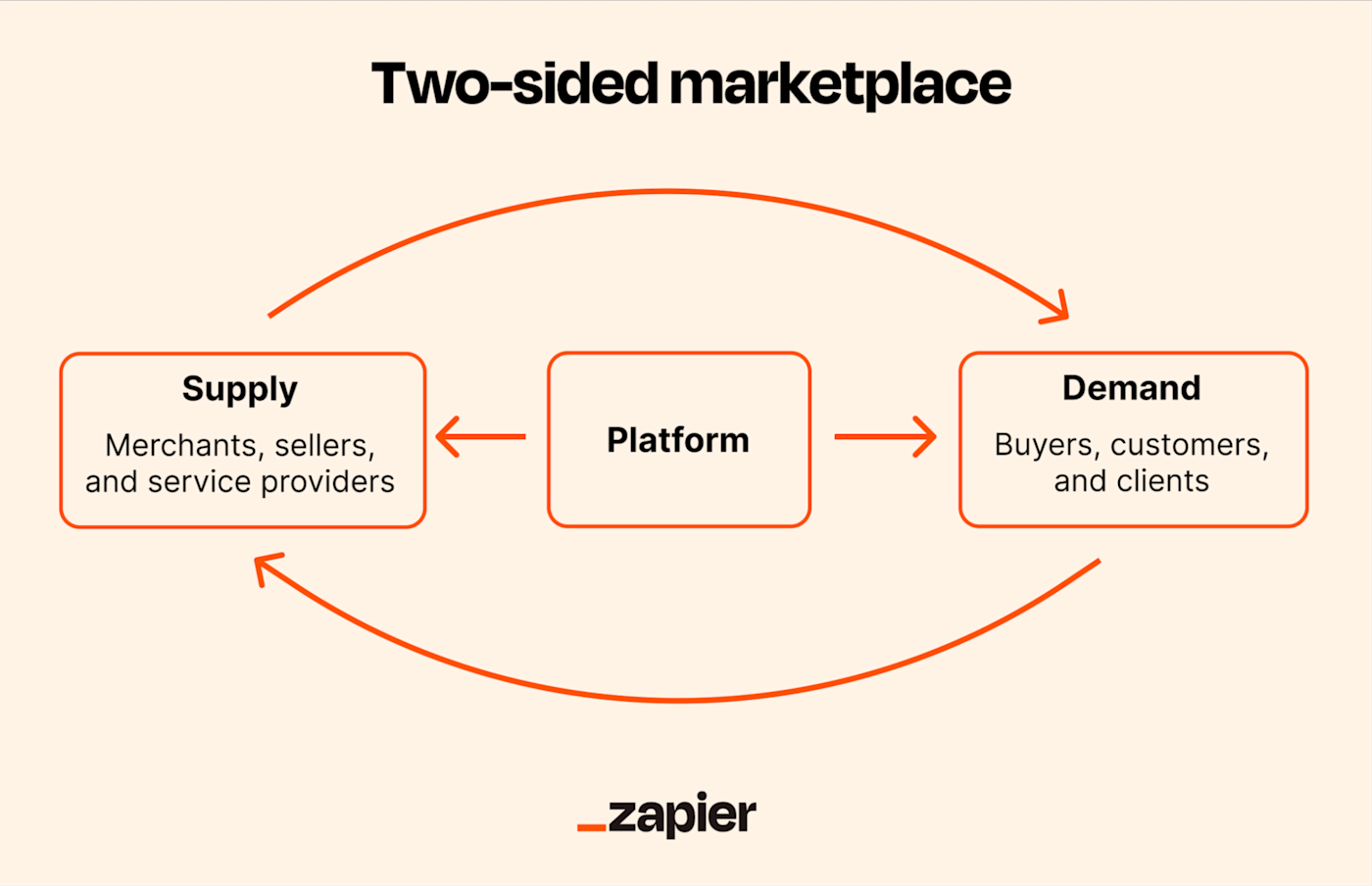
Two-sided marketplace examples
You can create a two-sided marketplace for just about anything, assuming there’s demand. Get inspiration from these diverse marketplace examples, from surfboard rentals to educational resources.
1. The Quiver
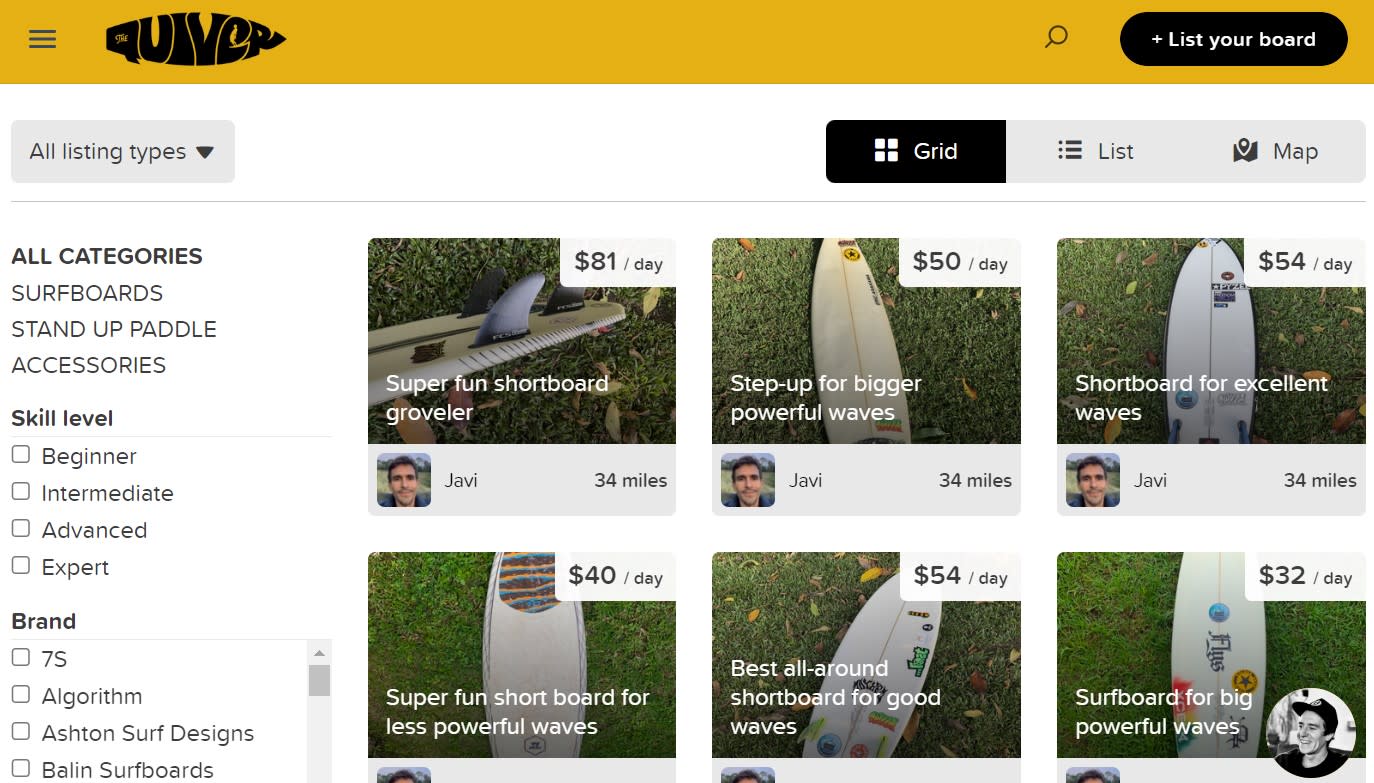
Description: The Quiver, founded by Rob Bonvetti in 2016, allows surfers to rent and share surfboards around the world. Rather than paying up to $150 each way to check your surfboard as airline baggage (and risk damaging your board), you can use The Quiver’s marketplace to rent boards wherever you go.
A hesitation for people renting their surfboards is that renters might damage, break, or fail to return their boards. The Quiver addresses this with a “You break it, you buy it” policy.
Revenue model: 10% commission on each rental.
2. Rover
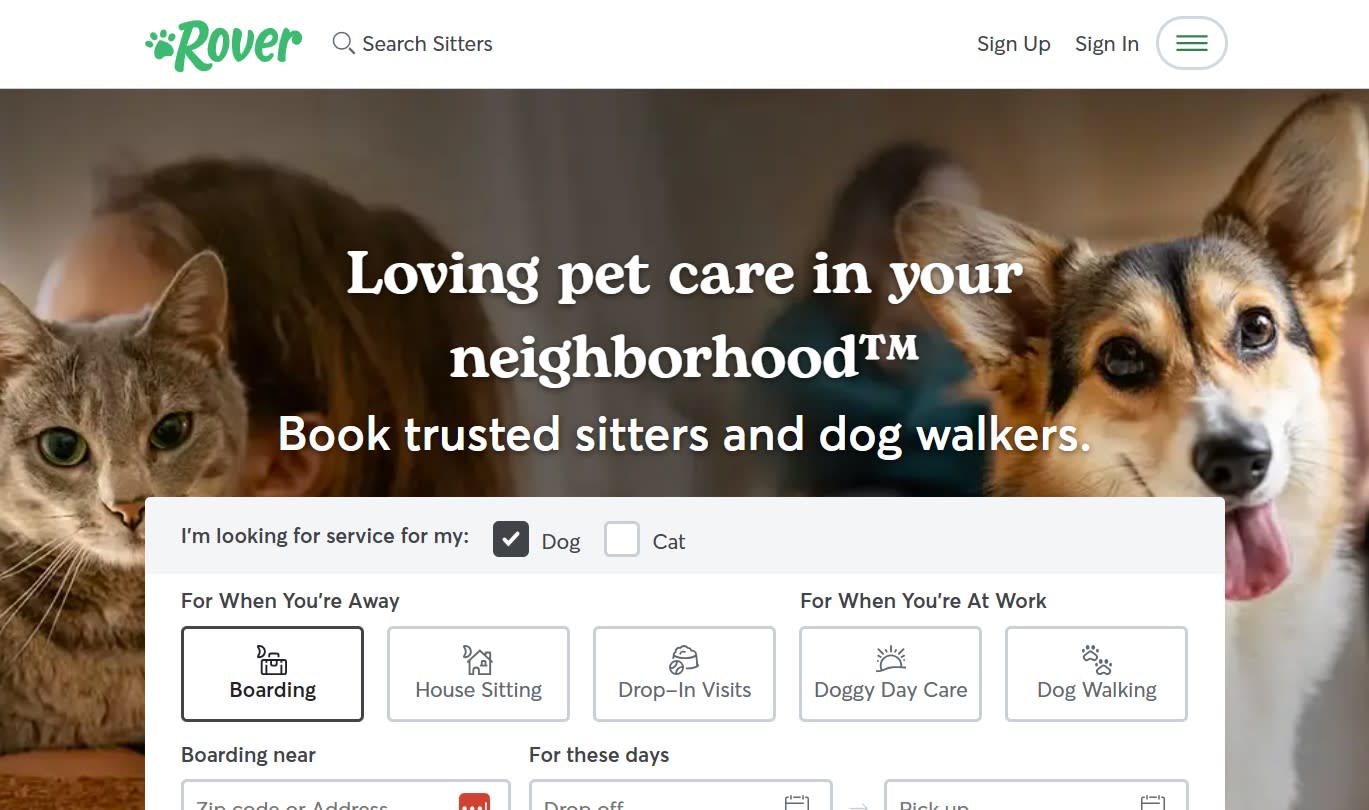
Description: Started in 2011 by Aaron Easterly, Rover connects pet owners with dog walkers and sitters. You can book services like boarding, house sitting, drop-in visits, and dog walking.
Rover requires a background check and asks each pet sitter to complete a profile outlining their pet care experience. They also highly recommend an in-person “meet and greet” before booking.
Revenue model: 15-25% service fee to pet care providers and an 11% service fee to pet owners.
3. BlaBlaCar
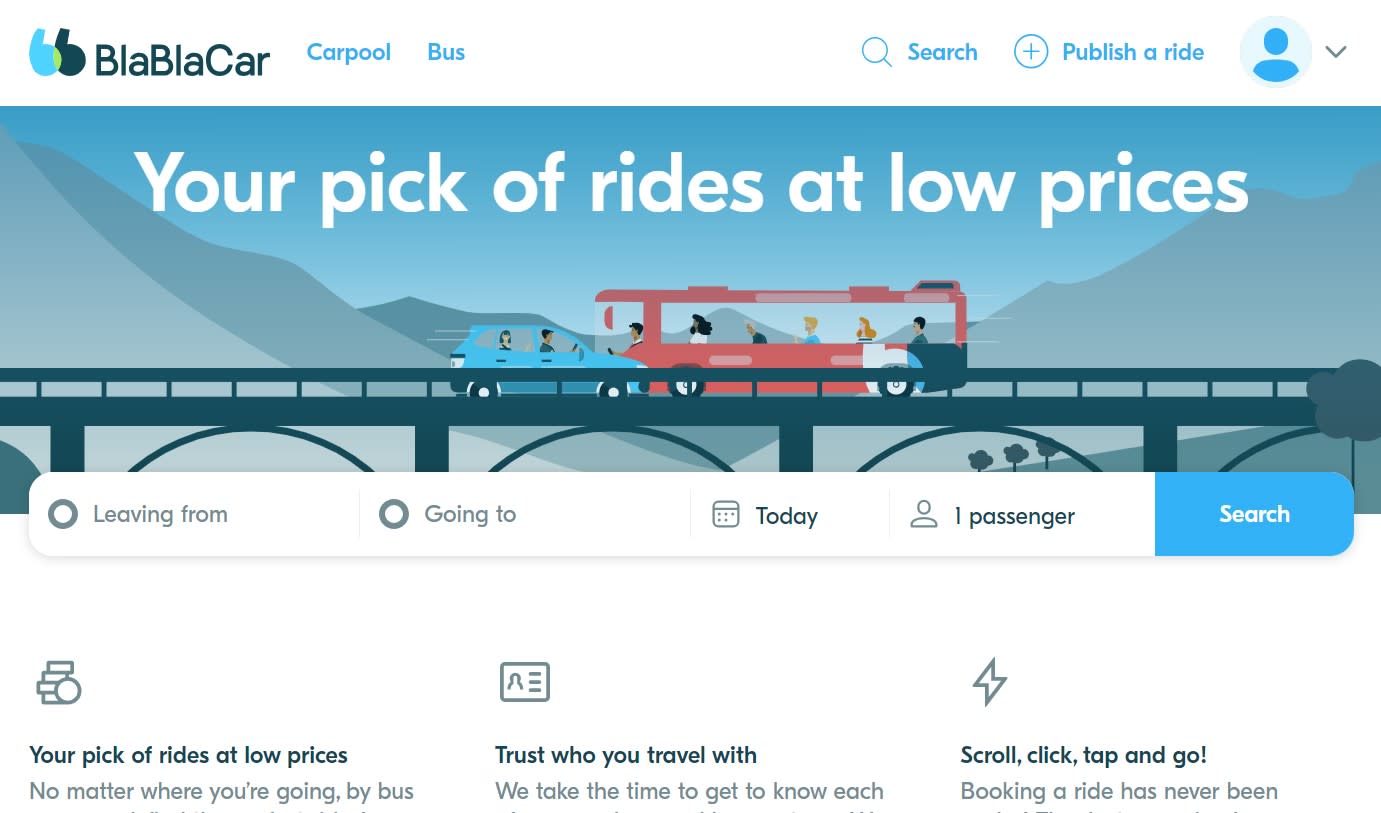
Description: BlaBlaCar links drivers and passengers for long-distance carpooling. Started by Frédéric Mazzella in 2004 in France, BlaBlaCar has 27 million users across 21 countries. (It’s particularly popular in Europe.)
Riders and drivers can select their level of “chattiness” to ensure that talkative passengers aren’t paired with silent drivers, or vice versa.
Revenue Model: BlaBlaCar charges a booking fee of 16-20% to passengers. Drivers don’t pay a fee.
4. TeachersPayTeachers
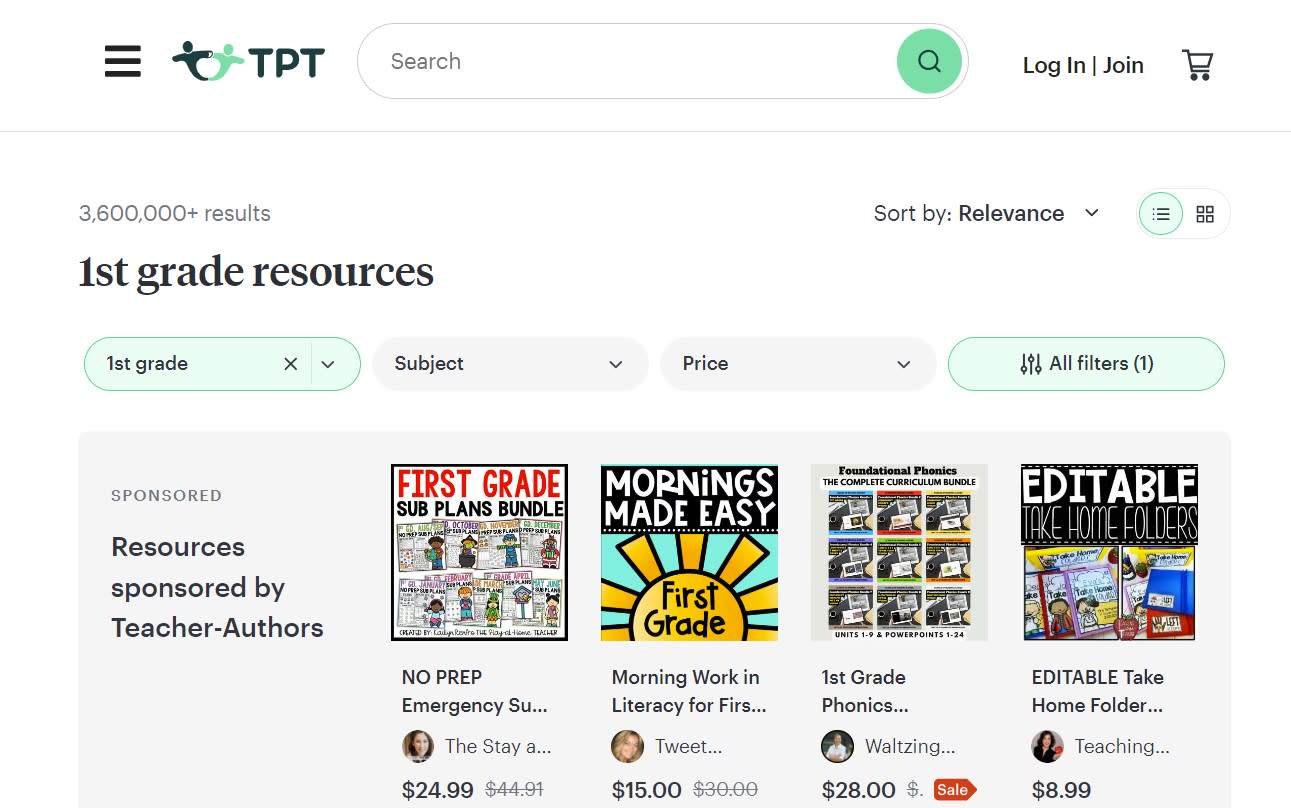
Description: TeachersPayTeachers (TpT) is a marketplace where teachers can buy and sell original educational resources, like lesson plans and classroom materials. (For example: a “no prep” emergency lesson plans bundle for 1st grade substitute teachers.) Founded by a teacher, Paul Edelman, in 2006, the goal of the platform is to allow educators to earn extra income by sharing the resources they’ve already created for their own classrooms.
TpT has some wild success stories, like Deanna Jump, a kindergarten teacher from Georgia who’s earned over a million dollars from selling her lesson plans.
Revenue model: TeachersPayTeachers takes a 40% commission on sales for sellers on the free plan, and a 15% commission for sellers who’ve upgraded to the $59.95 premium plan.
5. UpCounsel
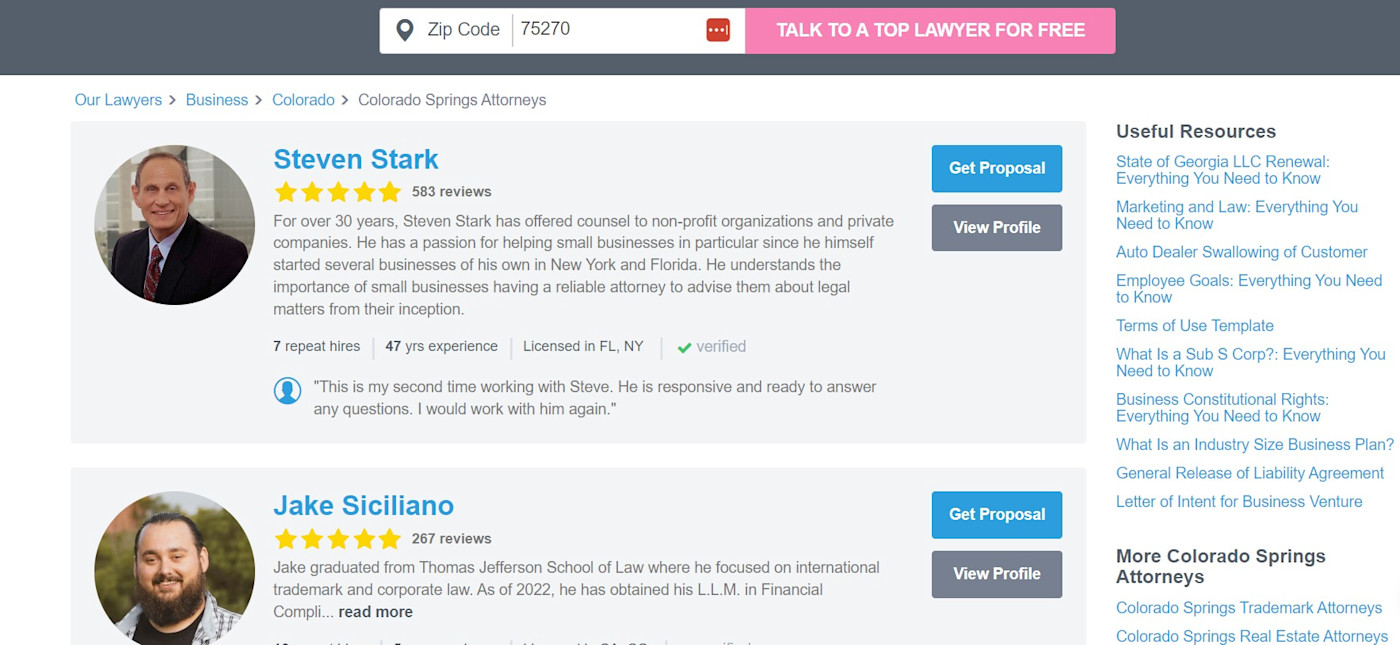
Description: UpCounsel connects businesses with freelance attorneys for a wide range of legal services at one-third of the price of a typical legal consultation. Matthew Faustman, a lawyer, founded Upcounsel in 2012.
The market for legal services is highly-regulated, and complications related to regulations and UpCounsel’s business model nearly took the service down in 2020. But after being acquired by a venture capital company and pivoting its business model to charge lawyers for access to leads, UpCounsel is profitable and growing.
Revenue model: Since its acquisition in 2020, UpCounsel charges attorneys a monthly subscription fee to access legal leads. It also charges clients an 8% commission on legal work.
Benefits of the two-sided marketplace model
For marketplace founders, the two-sided marketplace model is attractive because it can be highly scalable and profitable, particularly if all of your inventory changes hands between buyers and sellers rather than sitting on your balance sheet. Though marketplaces tend to start slow, their inherent network effects can build viral momentum over time—reducing the need to invest in advertising for growth.
With the right product-market fit, the two-sided marketplace model can benefit buyers and sellers, too.
-
Buyers get convenient access to a wider selection of products or services. (It would have been hard to rent a treehouse in Bali before the Airbnb era; now, you can choose from dozens of them.) Plus, they have the added security of booking through a neutral third party.
-
Sellers get access to an instant audience of customers, meaning they can focus less on marketing and more on providing a great product or service. Marketplaces can also reduce admin headaches, since bookings, payments, and communication are handled through the platform.
Two-sided marketplace challenges
Starting a marketplace has its challenges, though.
-
Platform leakage: Let’s say you charge a 15% transaction fee. Naturally, the incentive for buyers and sellers who’ve established a relationship is to save money by going off-platform. If enough users jump ship, your marketplace starts to shrink instead of grow.
-
Quality of inventory: When your marketplace is small, you can vet each listing. As it scales, that gets harder and harder. If left unmanaged, low-quality listings (and shady users) can undermine trust and ruin the customer experience.
-
The “chicken-and-egg” problem: Buyers don’t want to join a platform if there’s nothing to buy. And vendors don’t want to join a platform if there are no customers to sell to. This dynamic makes it tricky to start two-sided marketplaces. (On the flip side, it also provides a competitive moat for successful marketplaces.)
-
Winner-take-all dynamics: Once an incumbent marketplace has established trust and gathered buyers and sellers, it’s tough to displace it. Most markets have an incumbent and perhaps one serious challenger (e.g., Uber and Lyft); not much competition can survive beyond that. Often, marketplaces end up fragmenting geographically instead: DoorDash dominates food delivery in North America, Rappi leads in Latin America, and Grab is popular in Asia.
How to build a successful two-sided marketplace
To successfully navigate the challenges of marketplace-building, here’s what to keep in mind.
1. Validate your marketplace idea
Got a mind-blowing marketplace idea? Your next step, as with any business idea, is to verify demand and product-market fit before you invest time, energy, or money.
Talk to customers: Even if your marketplace idea came from a pain point you experienced directly—like Rob Bonvetti, who started his surfboard rental marketplace after seeing firsthand how terrible the alternatives were—you still need to talk to potential customers. Figure out their pain points and how they’re currently addressing their problem. You might also want to poke around Craigslist and Facebook Marketplace: if there’s a bustling informal market, that might be a good sign.
Consider product-market fit: Bill Gurley, a venture capitalist who was one of the earliest investors in Uber, makes the point that not all markets are created equal. For example, healthcare is a massive market worth trillions of dollars, but it’s notoriously tough to “disrupt” because of burdensome regulatory requirements and resistance to change among large healthcare firms. Pick a market that not only wants what you’re offering, but is large enough to allow growth and is receptive to change.
2. Look for fatal flaws in your marketplace model
If customers like your idea and it fits well with your target market, it’s time to ask a few tough questions before you give your concept the green light.
How high is your risk of platform leakage? Service businesses with repeat interactions tend to be more susceptible to platform leakage. Jonathan Golden, Airbnb’s former Director of Product, highlights the example of a cleaning services marketplace: “Once trust is established through the platform, it is just as convenient to call the same cleaner directly the next time. After the marketplace creates an initial match, there is little reason for either side to stay on the platform.”
Do you handle physical inventory directly? Most marketplaces operate on a peer-to-peer model; if you decide to handle inventory directly, you may be able to add more value, but you’re also taking on a lot more risk. Move Loot, a used furniture marketplace, made buying and selling used furniture incredibly convenient. But since Move Loot operated on a consignment model—storing furniture until the sale—it faced huge warehousing expenses, burned through cash quickly, and had to shut down.
How often do customers transact, and how much do they spend? Jonathan Golden of Airbnb says to “tread carefully with marketplaces that deal in low-dollar, low-frequency transactions. With little money coming in, it becomes increasingly difficult to acquire users, and revenue per transaction is commonly too little to even cover credit card processing costs.” Instead, look for opportunities with high-dollar, low-frequency transactions (like Airbnb) or low-dollar, high-frequency transactions (like Uber).
3. Build an MVP
You don’t need to spend thousands of dollars developing a custom marketplace. Instead, your goal should be to get a minimum-viable product (MVP) in front of customers as quickly as possible.
Fortunately, you have plenty of options. Consider using a no-code app builder, either purpose-built for marketplaces (like Sharetribe, Tangram, Arcadier, or Yo!Rent) or more general-purpose for custom designs.
With Zapier, you can connect marketplace platforms like Sharetribe with thousands of other apps to quickly build a functional MVP.
Zapier is the leader in workflow automation—integrating with thousands of apps from partners like Google, Salesforce, and Microsoft. Use interfaces, data tables, and logic to build secure, automated systems for your business-critical workflows across your organization’s technology stack. Learn more.
4. Attract sellers first, then buyers
In most cases, you’ll want to solve the chicken-and-egg conundrum by focusing on sellers first. (Buyers have zero reason to join an empty marketplace, while sellers at least have the possibility of a future source of customers.)
Recruit your initial batch of sellers through your network or via cold outreach. Look for sellers who are active on other platforms and offer them incentives like lower commissions or time-saving admin features.
Once you have a decent number of sellers, work on buyers. But don’t scale too fast: you might end up with a mismatch between buyers and sellers, leading to skewed pricing, weak selection, or a poor vendor experience. Consider starting small—like with a single location—and scaling from there.
5. Build trust
Whether your marketplace participants are renting surfboards or soliciting legal counsel, they’re likely to bail if they can’t establish mutual trust. But what exactly does establishing trust in a marketplace look like?
Start by making sure the seller listings on your marketplace are high-quality; on the other side of the transaction, make sure buyers have properly filled-out profiles. (At the beginning, you may want to vet buyers and sellers manually). As you scale, add features that create more peace of mind, like user verification, insurance, escrow, and buyer protection. A review system can help, too.
Even with all of this in place, one terrible experience on the buyer side or the seller side can blow up into a public relations storm. To counter this, be as thorough as you can with regulations and user guidelines—and enforce them.
6. Provide enough value to keep users on your platform
At the end of an Uber ride, occasionally the driver will hand me their business card so I can message them directly for commission-free rides. You can try to prevent this sort of leakage with scary terms and conditions, but eventually it’s inevitable if your platform doesn’t provide enough value. Case in point: I’ve rarely taken those drivers up on their offers because there’s no way they can pick me up faster than another Uber driver who’s already on the same block as me. Uber’s platform provides a value that a single driver can’t match.
By solving hard marketplace challenges—like convenience, speed, trust, payment, and fraud—and by offering experience-enhancing features on top of that, you can make your marketplace participants want to stay within your platform.
A great marketplace requires careful planning (and a lot of luck)
A disruptive marketplace idea that solves pressing customer problems feels like it should be enough, but it’s not. (Just ask Nimbl, the cash delivery platform; iCracked, the smartphone repair marketplace; or Cherry, the car washing app. All of them ultimately shut down.)
While two-sided marketplaces offer incredible scalability and growth potential, there are many ways to fail, from neglecting to build trust to accidentally building a “ghost” marketplace that doesn’t attract buyers or sellers.
If you want to build a marketplace that lasts for the long haul, validate your idea, choose your marketplace model carefully, start small with an MVP, and be relentless about providing exceptional value to both sides of your marketplace.
Related reading:
This article was originally published by Althea Storm in March 2023. The most recent update was in September 2024.